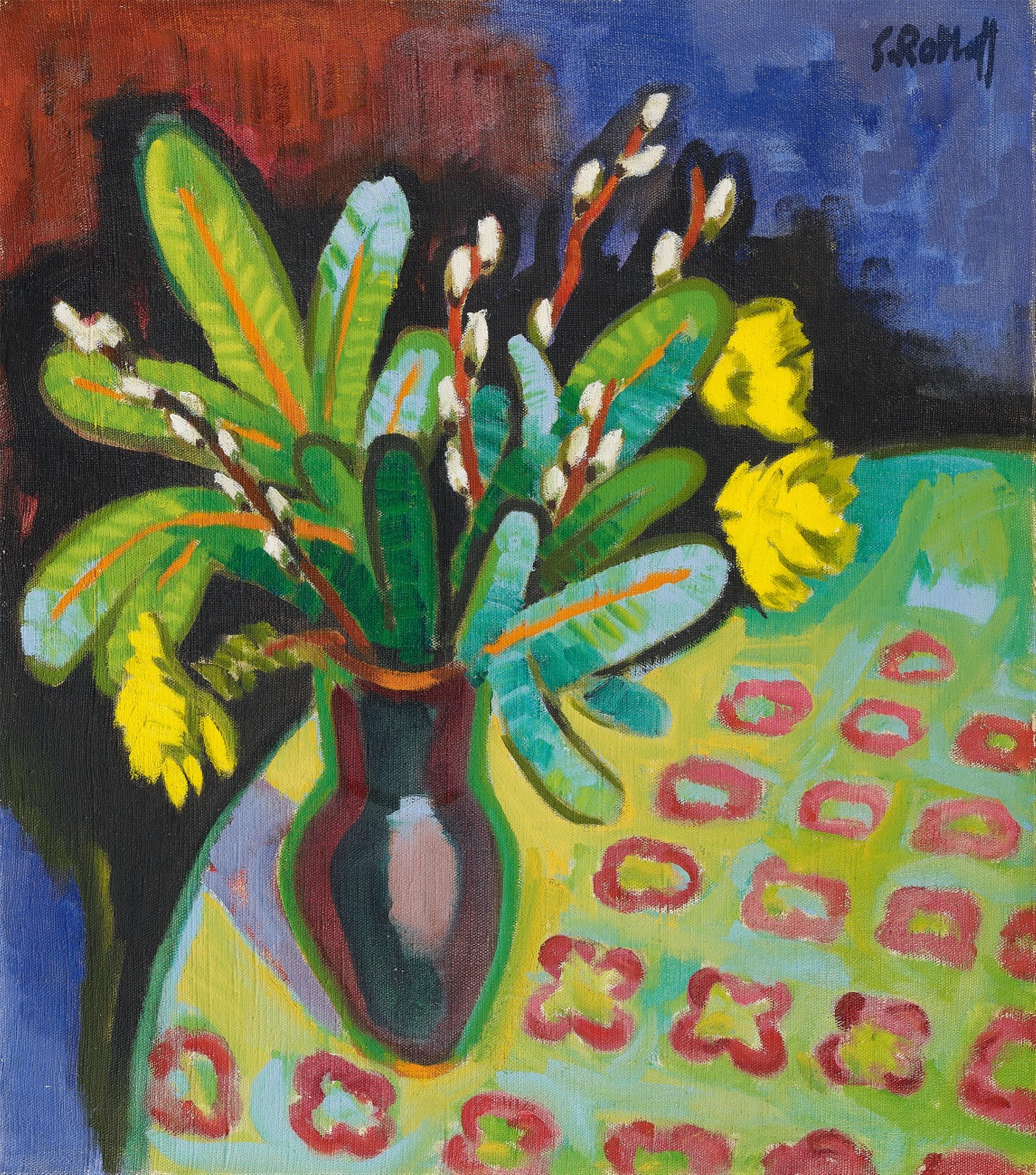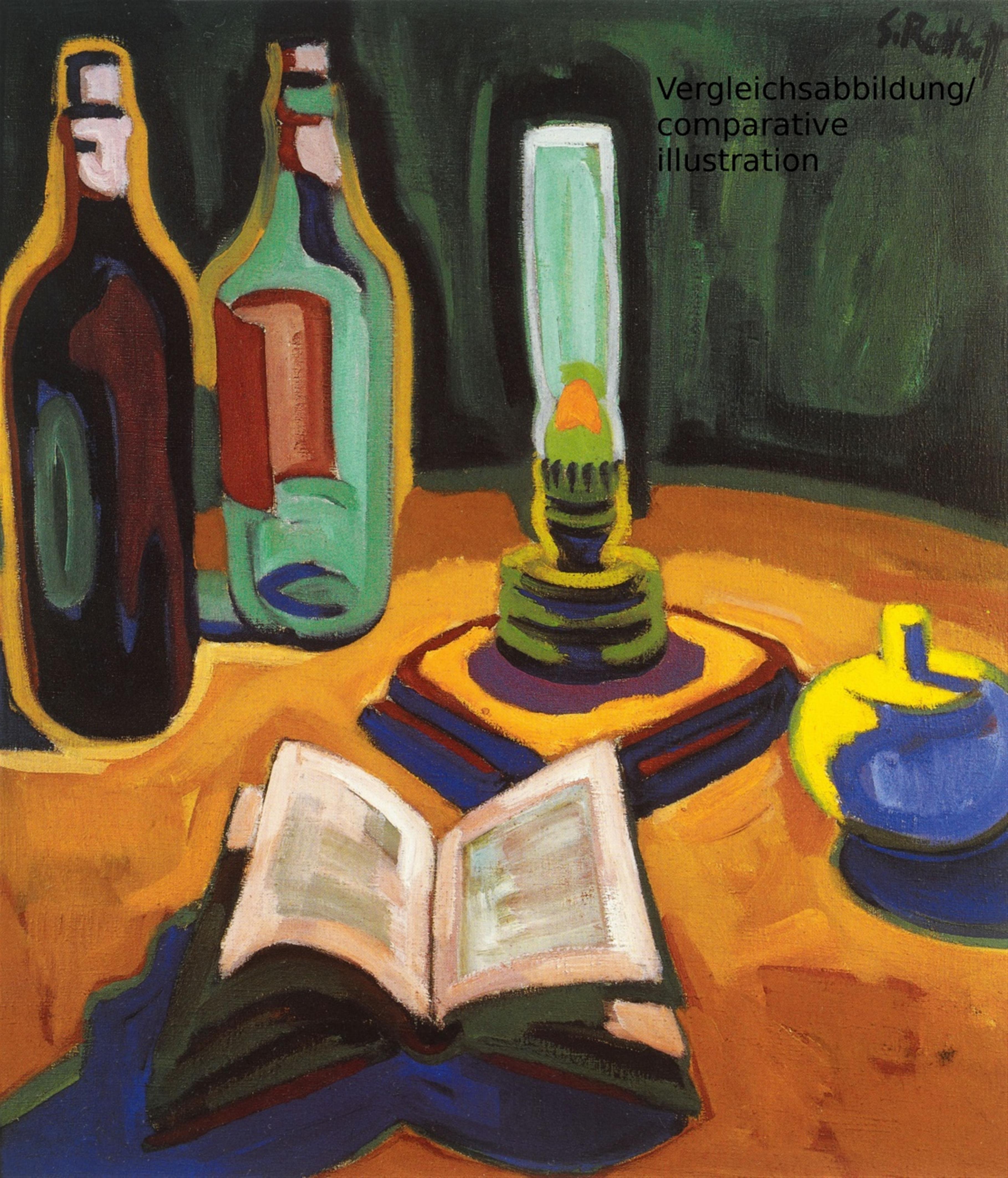Karl Schmidt-Rottluff
Osterstrauss
1947
Oil on canvas 73.3 x 65.5 cm Framed. Signed 'S. Rottluff' in blue upper right as well as signed, titled, dated, and inscribed 'Schmidt-Rottluff "Osterstrauss 47" (4710) = gewachst =' in black brush verso on stretcher. - In excellent condition with vibrant colours.
After spending the final years of the war in his hometown of Rottluff/Chemnitz, Karl Schmidt-Rottluff returned to Berlin in the autumn of 1946. One substantial reason for this was Karl Hofer's offer of a professorship at the refounded Hochschule für Bildende Kunst, which Schmidt-Rottluff accepted in the autumn of 1947. His teaching duties placed heavy demands on him, but after years of denunciation and being prohibited from painting, he was finally able to once again intensely dedicate himself to painting.
During the first years after the war, Schmidt-Rottluff primarily painted landscapes, interiors, views of his studio and still lifes. As one of the earliest paintings from this period, the “Osterstrauss” - with its rich contrasts, downy white pussy-willow catkins and luminously yellow narcissi - seems to symbolically herald the liberating power of this new beginning, a burgeoning spring. Scarcely one year later, it would be revealed how fragile this fresh start was. In a seemingly reversed light, Schmidt-Rottluff created his famous “Blockade-Stilleben”: in its expression of personal anxiety, it can be understood as a haunting contemporary commentary on the acute political situation in West Berlin (see comparative illustration).
Colour would continue to be of central importance for Schmidt-Rottluff's work. In the works of the immediate post-war period, he resolutely concentrated on a limited palette that he was able to employ with great power. Along with his directly sensual handling of colour, it is his simplified formal idiom, with its two-dimensional and strongly contoured pictorial elements, that characterises his late work. In these paintings by Schmidt-Rottluff, Will Grohmann has identified a “zone painting” whose foundations had already been laid in works of the early 1920s: this painterly form mediates between object and space, integrating the motif into the surface and thus generating a layered, two-dimensional pictorial space (cf. Will Grohmann, Karl Schmidt-Rottluff, Stuttgart 1956, p. 106).
Provenance
Acquired directly from the artist by the former owner (1970); Private possession since, South Germany




